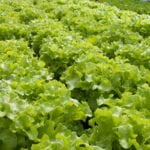Pressure-treated wood is a popular choice for garden projects, but how bad is pressure-treated wood for vegetable gardens? The use of pressure-treated wood in gardening has raised concerns about the potential risks associated with its chemical components. This article delves into the process of pressure treating wood, potential dangers for vegetable gardens, regulations and guidelines, existing research on effects, best practices for mitigating risks, and real-life examples to provide insight into this important topic.
Pressure treated wood goes through a process that involves the infusion of chemical preservatives to protect it from decay and insect damage. These chemicals can pose risks when used in vegetable gardens due to their potential leaching into the soil and impact on plant health. As such, it’s crucial to understand the process of pressure treatment and the chemicals involved in order to make informed decisions about using this type of wood in garden projects.
The potential dangers of pressure-treated wood in vegetable gardens extend to the health risks for those consuming produce from treated gardens. With these concerns in mind, there are regulations and guidelines governing the use of pressure-treated wood in gardens, as well as recommended safety measures and alternative materials available for consideration. Research findings also shed light on the effects of pressure-treated wood on soil and plant health, providing valuable insights for gardeners and homeowners.
The Process of Pressure Treating Wood
Overview of the Pressure-Treating Process
Pressure-treated wood undergoes a treatment process where it is placed in a large cylindrical chamber. The air is removed from the chamber, creating a vacuum, and then a water-based solution containing preservatives is introduced at high pressure. This forces the solution deep into the cellular structure of the wood, providing protection against decay and insects.
Chemicals Used in Pressure-Treated Wood
The chemicals commonly used in pressure-treated wood include chromated copper arsenate (CCA), alkaline copper quaternary (ACQ), and copper azole (CA). These substances are effective at preventing rot and deterioration, but they also raise concerns about their potential impact on soil, plants, and human health when used in vegetable gardens.
Risks Associated With These Chemicals in Gardens
There are concerns that these chemicals may leach into the soil over time, posing a risk to plant health and potentially contaminating edible crops. Gardeners must be aware of these risks when using pressure-treated wood in their vegetable garden projects and take appropriate measures to mitigate any potential harm.
Potential Dangers of Pressure-Treated Wood in Vegetable Gardens
Pressure-treated wood has become a popular choice for garden projects due to its durability and resistance to decay. However, there are concerns about the potential risks associated with using pressure-treated wood in vegetable gardens. One of the main worries is the possibility of harmful chemicals leaching into the soil and affecting the health of plants and vegetables.
The pressure-treating process involves impregnating the wood with chemicals to protect it from insects, moisture, and decay. The most common chemicals used in this process are copper compounds and various types of arsenic.
These chemicals can pose serious risks when they come into contact with soil and plants, potentially impacting the health of the garden ecosystem. Furthermore, there is a concern about the potential health risks for those consuming produce from treated gardens, as there is a risk of chemical residues being present on the vegetables.
Gardeners need to be aware of these dangers when considering the use of pressure-treated wood in their vegetable gardens. It’s essential to weigh the benefits of using this material against the potential hazards it may pose to both plant and human health. In addition, understanding methods for mitigating these risks and finding safe alternatives is important for making informed decisions when building or maintaining a vegetable garden.
| Chemicals | Risks |
|---|---|
| Copper compounds | Potential impact on soil and plant health |
| Arsenic | Potential health risks for those consuming produce from treated gardens |
Regulations and Guidelines for Using Pressure-Treated Wood in Vegetable Gardens
Pressure-treated wood has been a popular choice for garden construction and landscaping projects for many years. However, the use of this type of wood in vegetable gardens has raised concerns due to the potential risks associated with the chemicals used in the pressure-treating process. As a result, regulations and guidelines have been established to address the use of pressure-treated wood in vegetable gardens.
When using pressure-treated wood in vegetable gardens, it is important to be aware of legal considerations regarding its use. Some localities may have specific regulations or restrictions on the use of treated wood in certain applications, including vegetable gardens. It is essential to check with local building codes and authorities to ensure compliance with any applicable rules or permits.
To ensure safety when handling and using pressure-treated wood in vegetable gardens, there are recommended guidelines that gardeners should follow. These guidelines often include measures such as wearing protective gear during construction, minimizing direct contact with treated wood, and properly disposing of any leftover materials to prevent environmental contamination.
For those who are hesitant about using pressure-treated wood in their vegetable gardens, there are alternatives available. Gardeners can explore options such as naturally resistant woods, composite materials, or recycled plastic lumber as substitutes for pressure-treated wood in garden construction projects. By considering these alternatives, gardeners can minimize potential risks associated with the use of treated wood while still creating functional and durable garden structures.
Overall, being informed about regulations and guidelines for using pressure-treated wood in vegetable gardens is crucial for ensuring the safety of both the environment and those who consume produce from these gardens. By following these regulations and guidelines or exploring alternative materials, gardeners can make informed decisions about their garden construction projects while mitigating potential risks associated with pressure-treated wood.
Studies and Research on the Effects of Pressure-Treated Wood in Gardens
When considering using pressure-treated wood in vegetable gardens, it is essential to understand the potential effects on soil, plant health, and ultimately, human consumption. Several studies have been conducted to assess the impact of pressure-treated wood in garden settings, providing valuable insights for gardeners and homeowners. Here are some key findings from existing research on this topic:
- Existing research suggests that certain chemicals used in pressure-treated wood, such as chromated copper arsenate (CCA), can leach into the soil over time. Studies have shown that these chemicals can potentially affect the pH levels of the soil and lead to an imbalance in nutrient availability for plants.
- Furthermore, research has indicated that the presence of chemicals from pressure-treated wood can have a direct impact on plant health. This includes stunted growth, discoloration of leaves, and decreased yield in vegetable crops grown in proximity to treated wood.
- In terms of human health implications, studies have raised concerns about the potential risks associated with consuming produce from gardens built with pressure-treated wood. While more research is needed to fully understand the extent of these risks, existing findings suggest that minimizing exposure to chemical residues from treated wood is important for overall food safety.
As a result of these findings, it’s crucial for gardeners to consider the potential consequences of using pressure-treated wood in their vegetable gardens. Understanding the results of past research can help individuals make informed decisions about how best to approach building and maintaining their garden spaces while prioritizing environmental and human health.
Best Practices for Mitigating Risks When Using Pressure-Treated Wood in Vegetable Gardens
Pressure-treated wood has been a popular choice for gardeners and homeowners due to its durability and resistance to decay, but there are concerns about the potential risks it poses when used in vegetable gardens. The process of pressure treating wood involves impregnating it with chemicals to improve its durability and resistance to rot, which can raise questions about the safety of these chemicals in a garden setting.
When pressure-treated wood is used in vegetable gardens, there is a risk of harmful chemicals leaching into the soil and affecting plant health, as well as posing potential health risks for those consuming produce from treated gardens.
To mitigate the risks associated with using pressure-treated wood in vegetable gardens, there are several best practices that can be implemented. One approach is to reduce chemical leaching from treated wood by sealing or encapsulating the wood with an impermeable material before placing it in contact with the soil.
This can help prevent the chemicals from coming into direct contact with the garden soil and minimize their impact on plant health. Additionally, practicing safe gardening measures such as wearing gloves and dust masks when handling treated wood can help minimize exposure to any potentially harmful chemicals.
Furthermore, steps can be taken to protect the environment and the health of gardeners and consumers by implementing proper disposal methods for treated wood waste and following guidelines for handling and using pressure-treated wood. It’s essential for gardeners to stay informed about recommended safety measures for working with treated wood in vegetable gardens and explore alternatives that may be available for their specific gardening projects.
| Best Practices | Mitigating Risks |
|---|---|
| Seal or encapsulate treated wood | Reduces chemical leaching |
| Practice safe gardening measures | Wear gloves and dust masks when handling treated wood |
| Proper disposal methods | Implement guidelines for handling and using pressure-treated wood |
Real-Life Examples and Case Studies of Pressure-Treated Wood in Vegetable Gardens
Stories of Gardeners’ Experiences With Pressure-Treated Wood
Many gardeners have shared their experiences with using pressure-treated wood in their vegetable gardens. Some have reported concerns about the potential risks associated with the chemicals leaching into the soil, while others have highlighted the durability and longevity of using treated wood for garden projects. These stories provide valuable insights into the real-life implications of using pressure-treated wood in vegetable gardens.
Lessons Learned From Using Treated Wood in Garden Projects
Through their experiences, gardeners have learned important lessons when it comes to using pressure-treated wood in vegetable gardens. From understanding the importance of proper sealing and maintenance to minimize chemical leaching to being mindful of the types of plants that are most sensitive to these chemicals, these lessons can help guide other gardeners who are considering similar projects.
Successes and Challenges Related to Using Pressure-Treated Wood in Vegetable Gardens
Gardeners have also shared both their successes and challenges when utilizing pressure-treated wood in their vegetable gardens. While some have seen positive results in terms of structural integrity and longevity of garden beds or borders, others have faced difficulties with plant health or concerns about consuming produce grown in treated soil. These real-life examples demonstrate the complexity and considerations involved when deciding whether to use pressure-treated wood in a vegetable garden project.
Conclusion and Recommendations
In conclusion, the use of pressure-treated wood in vegetable gardens raises significant concerns about the potential risks to soil, plant health, and human consumption. The process of pressure treating wood involves the use of chemicals that can leach into the soil and potentially affect the well-being of plants as well as the individuals consuming produce from treated gardens.
While there are regulations and guidelines in place for using pressure-treated wood in gardens, it is essential for gardeners to be mindful of these risks and consider alternatives to ensure the safety of their garden environment.
Based on existing research and real-life examples, it is evident that pressure-treated wood can have detrimental effects on vegetable gardens. Therefore, it is recommended that gardeners explore alternative materials and methods for building and maintaining their gardens. Non-pressure-treated woods such as cedar or redwood, recycled plastic lumber, or composite materials offer viable options for constructing raised beds or other garden structures without the potential risks associated with treated wood.
Ultimately, while pressure-treated wood may be a convenient and cost-effective option for gardening projects, the potential impact on environmental and human health warrants careful consideration. By prioritizing safe gardening practices and embracing alternative materials, gardeners can create thriving vegetable gardens without compromising on safety or sustainability.
Frequently Asked Questions
Is It OK to Use Pressure Treated Wood in a Vegetable Garden?
Using pressure-treated wood in a vegetable garden has been a topic of debate. Pressure-treated wood contains chemicals that protect it from rot and insect damage, and these chemicals can leach into the soil.
While most experts agree that using pressure-treated wood for vegetable gardens is generally safe, it’s best to use an extra barrier like plastic or landscape fabric to prevent direct contact between the wood and the soil.
Is Home Depot Pressure Treated Wood Safe for Vegetable Gardens?
Home Depot pressure-treated wood is treated with preservatives to prolong its life but may still contain chemicals that could potentially leach into the soil.
If you’re concerned about using Home Depot’s pressure-treated wood in a vegetable garden, consider looking for alternatives like naturally rot-resistant woods such as cedar or redwood, or seek out certified organic lumber options.
What Wood Should Not Be Used in a Raised Garden Bed?
When building a raised garden bed, it’s wise to avoid using certain types of wood that are more prone to rotting and decay when exposed to moisture and soil. Woods like railroad ties, old treated wood (prior to 2003), and any wood that has been painted, stained, or treated with harmful chemicals should be avoided to prevent potentially harmful substances from leaching into the soil and contaminating your edible plants.
Opt for safer alternatives like cedar, redwood, or composite materials for constructing raised garden beds instead.

If you’re looking to get into vegetable gardening, or are just looking for some tips on how to make your current garden better, then you’ve come to the right place! My name is Ethel and I have been gardening for years. In this blog, I’m going to share with you some of my best tips on how to create a successful vegetable garden.





